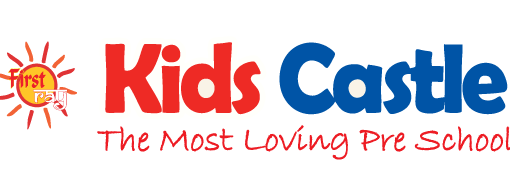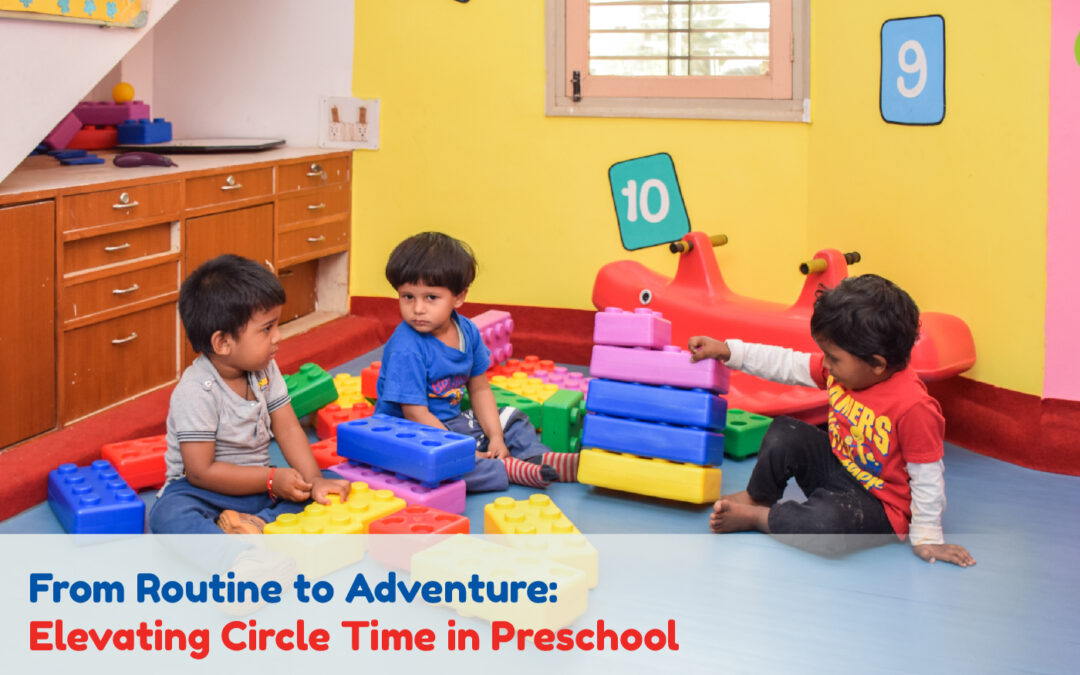Introduction:
Adjusting to the school-day wake-up routine can be challenging for both parents and children, especially after a holiday break when children are accustomed to going to bed late and waking up late.
Some parents might dismiss the urgency, thinking, “It’s just preschool; it’s ok if my child is a bit late.” However, what they may not realize is that the initial thirty minutes of the school day are crucial for setting the tone for the day and also to inculcate discipline in the child. The significance of this time, often called circle time, is similar to that of breakfast—a meal often undervalued, yet universally acknowledged by health experts as the most critical meal of the day. Just as skipping breakfast is ill-advised, missing circle time can disadvantage preschoolers, who should be calm and orderly, avoiding any rush or the stress of being late.
Let us understand more about Circle time in this blog:
What is circle time?
Circle time is a structured session where children gather around their teacher to get ready for the day’s activities. Traditionally, circle time takes place on a large carpet or rug in the classroom, arranged in a circle to allow comfortable seating for all participants.
The session typically begins with a welcoming song and a roll call, serving as an excellent opportunity for children to learn and remember each other’s names, providing an informal introduction to all class members. Beyond attendance, circle time involves activities like updating the calendar, which teaches children complex concepts such as sequence, the passage of time, and seasonal changes, in addition to fostering skills in counting and observing weather patterns. Discussions about personal observations and preferences related to weather also take place, enriching the children’s understanding and appreciation of their environment.
Moreover, circle time serves as a briefing moment where the teacher outlines the day’s schedule, reassuring children about the day’s end, enhancing their engagement and security.
The core purpose is to enrich children’s social, emotional, and academic skills in a supportive, community-oriented setting. Circle time’s flexibility allows teachers to tailor its content to maximize its benefits, making it an indispensable part of the preschool day.
Circle time activities for preschoolers
Regular circle time may reveal children’s difficulty maintaining focus, as they might start playing with toys, fidgeting, or losing attention. This behaviour is typical, given that preschoolers’ focus lasts only 10-12 minutes.
To keep kids interested, the activities or the duration can be varied. Simple conversations, singing, and book reading can ingrain self-control and social skills.
Keep in mind that circle time is meant to be enjoyable and brief.
1. Setting circle time rules:
It helps to detail the significance of the circle time to the children and encourage them to propose rules they think are essential for the activity. Their involvement in creating these rules will likely increase their adherence.
Suggested rules for adequate circle time include:
● Respecting and valuing all contributions without negativity.
● Raising hands to signal a wish to speak.
● Refraining from interrupting others mid-conversation.
● Practising turn-taking consistently.
● Permitting children to opt out of speaking when they prefer not to.
2. Playing a musical game:
Engaging the class with a song or a musical game helps to grab their attention. For instance,” Head, Shoulders, Knees, and Toes” combines singing, movement, and actions, allowing children to sing and move before transitioning to the next activity in circle time. Introducing musical games that include clapping to a rhythm, imitating animal sounds, stomping feet, or freezing when the music halts are also useful.
Summarize Daily Learning
It helps to employ circle time at the end of each day for a reflective session on the day’s learnings. Having children share their day’s highlights can enhance memory retention, provide feedback on engaging activities, and foster communication skills. This occasion also sets the next day’s agenda, reinforcing classroom norms and expectations, thereby priming children for upcoming educational endeavours.
3. Reading Books:
Storytime is a cherished activity during circle time, offering more than just enjoyment. It plays a crucial role in enhancing children’s linguistic and cognitive abilities. Children reading aloud encounter new words, sentence formations, and narrative styles, significantly aiding their language development.
Moreover, this activity stimulates preschoolers’ imagination and creativity, guiding them through various settings and acquainting them with multiple characters and situations. The shared experience of reading aloud also strengthens emotional bonds among caregivers, educators, and children, contributing to their social and emotional growth.
4. Introducing thematic lessons with props:
Using a hands-on approach by giving the kids tangible objects to play with, captures their attention. For example, planting seeds and observing them germinate with a magnifying glass can be an enriching experience.
When teaching the alphabet, children can be asked to pick the objects from a box, to match each one with its initial letter, like “s” for “spoon.” It motivates children to interact with the objects and inform their peers of their discoveries. Moreover, this concept can improve social and emotional competencies by planning activities that highlight sharing and taking turns. For example, toys can be passed around the circle and each child can share their opinions or story about the toy. This approach fosters empathy and communication.
5. Encourage dramatic play:
Dramatic or pretend play, such as mimicking animal sounds, simulating a grocery store visit, or imagining their rug as a boat, enhances children’s creativity, imagination, and self-expression, making it a refreshing and engaging addition to circle time.
Active learning is critical for preschoolers, who thrive on exploration and movement in structured activities. Enhance circle time by incorporating full-body experiences, such as using props for teaching and making storytime an interactive adventure.
Check out the blog on unique activities and games to nurture children’s creativity.
Conclusion:
Circle time in preschool is crucial for young learners’ growth. It offers a dynamic environment for social engagement, educational activities, and fostering a sense of community. Teachers who include interactive activities maintain a regular schedule and ensure brief sessions lay the groundwork for a positive circle time experience.
This practice helps children enhance vital abilities, including communication, listening, sharing turns, and teamwork, all while nurturing a passion for learning. In essence, circle time in preschool establishes a solid base for academic achievement and personal development, marking it as a critical element of early childhood education.
Please subscribe to our YouTube channel.

